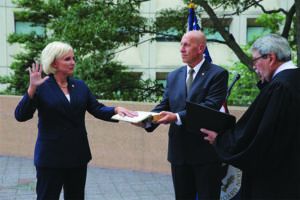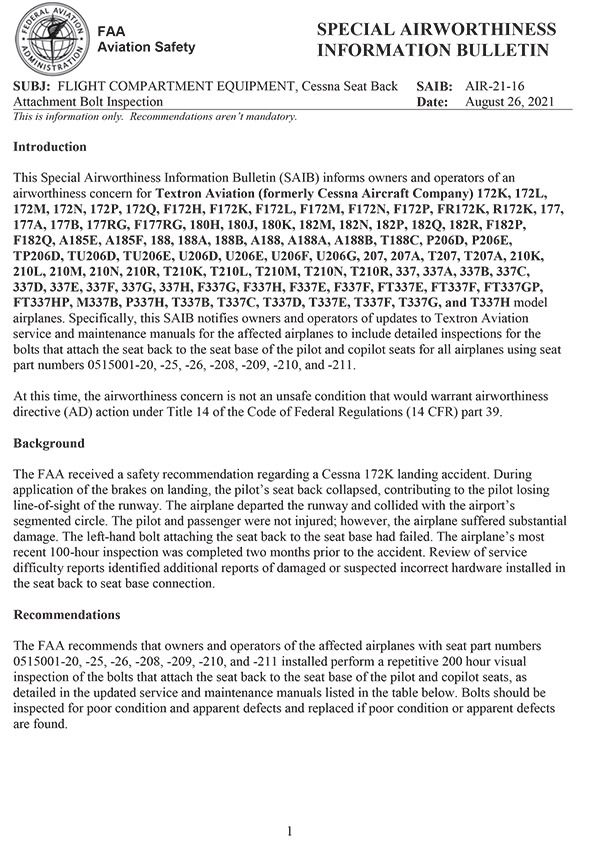With the proliferation of electronic flight bag (EFB) software running on tablets in our cockpits, it’s often easy to forget that some of the data we download every 28 days may not be correct. In fact, the charts, approach plates and airport information we use—to name just three categories—can easily be missing important material or simply include errors.
Mistakes that creep into FAA charts often are the subject of Flight Data Center (FDC) Notams and are part of a full pre-flight briefing. Others are more subtle and come about when electronic charting services run by Jeppesen and Garmin, for two examples, screw up. Often, the charting error involves an overseas airport you’ll never reach in your Skyhawk, but sometimes they’re close to home. Unless you diligently seek information on mistakes from your database provider, you may never know of the problem.
MISSING SFRA PROCEDURES
For example, users of the FAA’s Northeast Chart Supplement (CS, formerly the Airport/Facility Directory) effective August 12, 2021, are missing the seven pages that document the Washington, D.C. SFRA Special Terms and Procedures, due to an internal production error. The material was omitted from the printed and electronic versions.
The FAA issued a Safety Alert on August 25, alerting CS users to the omission and reprinting the material. That Safety Alert, in PDF format, can be accessed online at tinyurl.com/SAF-SFRA. The omission presumably will be corrected with the next edition, effective October 7, 2021. The Safety Alert is the only reference we could find on the missing material, even after two separate Notam searches.
Seat security aboard Cessna’s legacy 100-series singles has always been an issue, with ADs and inspection requirements filtering down through the years. If the seat isn’t secure in its mounting rails, it can slide back—on takeoff, for example—and contribute to losing control. In a newly released special airworthiness bulletin (SAIB AIR-21-16, August 26, 2021), the FAA is notifying owners and operators of older Cessna 172, 177, 180, 182, 188, 206, 207, 210 and 337 models of updates to Textron Aviation service and maintenance manuals for affected airplanes and seats.
The new SAIB stems from a Cessna 172K landing accident in which the seat back collapsed; the pilot subsequently lost control. The left-hand bolt attaching the seat back to the seat base had failed. The FAA’s service difficulty reports show damaged or suspected incorrect hardware may be used to install the seat back. The FAA recommends that owners and operators of the affected airplanes with seat part numbers 0515001-20, -25, -26, -208, -209, -210, and -211 perform repetitive 200-hour visual inspections of the bolts for poor condition and apparent defects, and replace them if anomalies are found.
JEPPESEN
Jeppesen publishes a regular change notice series for its electronic flight information products known as NavData Alerts. They “are designed to inform commercial NavData subscribers…and are not designed for individual pilot notification….” They contain “safety-of-flight information including, but not limited to, incorrect turn directions, altitudes, airway changes, and SID/STAR/Approach procedures” and may be accessed online at ww2.jeppesen.com/notices/.
The company also offers its On Demand Notices service, which allows users to search for airspace and ATC changes before they appear in Jeppesen’s bi-weekly revisions.

Jennifer L. Homendy took the oath of office August 13, 2021, during an outdoor ceremony held at NTSB headquarters, in which she was sworn in as the 15th Chair of the National Transportation Safety Board. Homendy replaces Robert L. Sumwalt, board member since 2006 and its chairman since 2017.
Homendy was nominated by President Biden May 19, and was unanimously confirmed by the U.S. Senate August 9. NTSB Vice Chairman Bruce Landsberg, who served as the acting chairman since July 1, returns to his position as the NTSB’s Vice Chairman.
“The country needs a robust and energetic NTSB to ensure safety is well represented in all modes of transportation,” said Homendy. “I look forward to supporting our outstanding staff and their work as we endeavor to make transportation safer for all.”
Homendy is the fourth woman to lead the NTSB and one of 11 women who have served as board members.
GARMIN
In addition to its avionics products, Garmin International also publishes the electronic charting data used to update them. It’s good to have competition—Jeppesen used to be the only game in town for some electronic navigation data—but Garmin seems to make mistakes, too, and finding related information can be just as difficult.
Like Jeppesen, Garmin maintains a dedicated page on its web site to “advise owners/operators of important information regarding the fidelity and usability of an aviation product or database; the serviceability of a Garmin product; or to notify owners/operators of an applicable aviation service bulletin.” Garmin’s Aviation Alerts and Advisories page is online at www.garmin.com/en-US/aviationalerts/ and includes database alerts, notification of device software updates and more mundane items like service bulletins. A recent Garmin Navigation Data Alert, for example, notified users of incorrect altitudes finding their way into the database for RNAV (GPS) approach procedures at three different U.S. airports.
While it’s a good thing aeronautical data publishers alert us to their errors, the problem is we have to search out this information, which can be well-hidden. There’s got to be a better way to get this information into pilots’ hands.
Just when you thought it was safe to fly into a towered airport, Covid-19’s Delta variant is impacting ATC facilities again. In FAA control towers and other ATC facilities where workers are crowded, essential and scheduled, each new shift brings a potential exposure to the staff, no matter how much testing is required. While we’re not aware of recent facility closures—ATC Zero—involving Covid-19 infections, the FAA’s own data show controllers and staff continue to test positive.
The FAA maintains a real-time status page at www.faa.gov/coronavirus/map/. Some of the data from that page for the state of Florida alone is reproduced below:

In addition to reviewing Notams and carrying plenty of fuel to account for delays, we also need to understand when we are not given our usual and customary VFR flight following or preferred routing. Frankly, looking at the numbers in the small sampling above, it amazes us there are not more ATC Zero situations occurring.




